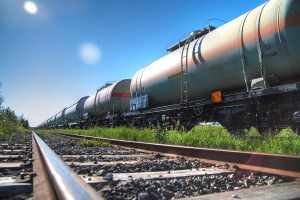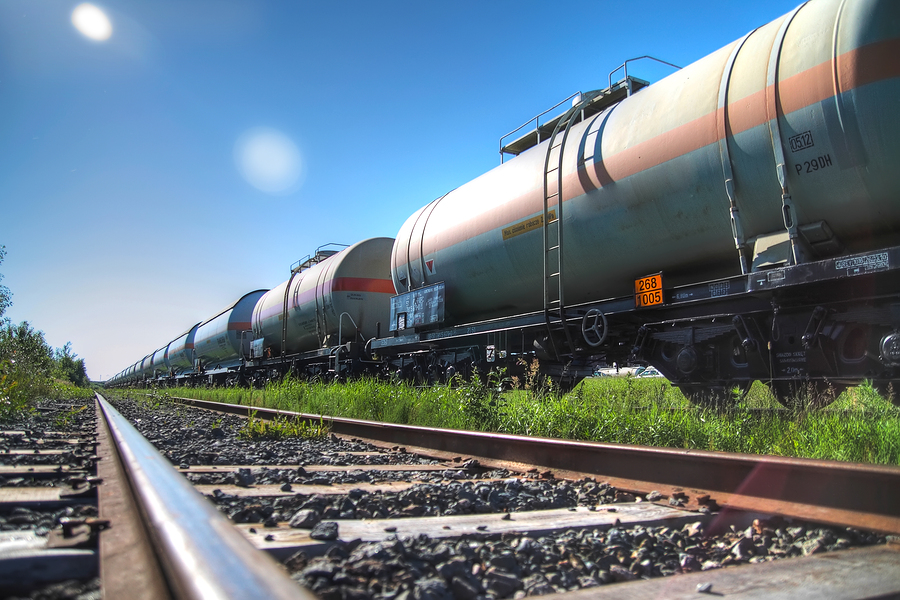The end of the line may be in sight for a North Dakota safety program aimed at lowering the risk of disastrous train derailments involving the state’s crude oil.
The pilot program, which includes two rail safety inspectors and a manager to supplement inspections by the Federal Railroad Administration, is halfway through its four-year run this month and likely will be scrapped in two years, said House Majority Leader Al Carlson and his Republican Senate counterpart, Rich Wardner.
They said the program duplicates federal and industry inspections programs and is not needed as the bulk of the state’s crude oil is now moved by pipelines.
“I think it will run its course, and when it’s done, my gut feeling is we won’t re-up it,” Wardner said.
 Carlson said the pilot program was an overreaction following a spate of accidents involving North Dakota crude in the U.S. and Canada, including one in the hometown of then-Gov. Jack Dalrymple, who supported the idea.
Carlson said the pilot program was an overreaction following a spate of accidents involving North Dakota crude in the U.S. and Canada, including one in the hometown of then-Gov. Jack Dalrymple, who supported the idea.
“I’ve never supported it and I won’t support renewing it,” Carlson said. “Every other program – once you start them, everybody wants to keep them. That’s government.”
The FRA said about 30 other states provide supplemental safety inspections. The agency said it does not reduce its efforts in states that have state rail safety inspectors.
North Dakota’s rail safety program was Republican Public Service Commissioner Julie Fedorchak’s campaign platform when she ran for the position in 2014. Fedorchak continues to defend the program, saying it does not duplicate federal efforts.
The program’s annual budget of about $300,000 is funded by a tax that railroads pay on diesel.
“It’s funded by (railroads), not by citizens,” Fedorchak said. “It’s a very good use of those dollars. I think it’s doing a lot of important things to improve safety.”
Since its inception, state inspectors have found nearly 2,700 “defects” on tracks and railroad rolling stock, resulting in 50 violations, data show.
Fedorchak said any violations “if left unfixed, could lead to a derailment.”
North Dakota has produced about 1 million barrels of oil daily since the program started two years ago. At the time, about 75 percent of it was being shipped by rail. Today, railed oil makes up less than 30 percent of the shipments, as more pipelines have been built, including the contentious Dakota Access pipeline, said Justin Kringstad, director of the North Dakota Pipeline Authority.
Crude oil shipments are not the only worry on more than 3,000 miles of track in the state and the lines beyond, Fedorchak said. Anhydrous ammonia, a common fertilizer, is seen as the biggest danger, she said. She pointed to a 2002 derailment in Minot that ruptured tanker cars carrying the toxic farm chemical.
The wreck unleashed a cloud of anhydrous ammonia over the city, killing one man and sending hundreds of people to the hospital.
“Inspectors will say that’s their greatest fear,” Fedorchak said.
BNSF Railway Co. is the biggest player in North Dakota, hauling the bulk of the railed crude out of the region and the inbound freight that supports oil drilling. The company shipped more than 426,000 carloads of products from North Dakota last year – about half of which contained coal or grain. BNSF has said crude oil never makes up more than 5 percent of the railroad’s total volume.
Spokeswoman Amy McBeth said the railroad “doesn’t have a position” on the state-run rail inspections. “We have our own robust track inspections,” she said.
BNSF has invested more than $1 billion in its network in North Dakota since 2013 and plans to put another $80 million into it this year, McBeth said.
“We have every incentive to prevent incidents,” she said.
Fedorchak said that may be, but it doesn’t hurt to have more eyes on the industry.
“They are inspecting themselves – these are not third-party inspections,” Fedorchak said. “That’s a pretty significant difference.”
Was this article valuable?
Here are more articles you may enjoy.


 Abbott Presses Congress for Shield Over Preemie Baby Formula Litigation That Could Cost It Billions
Abbott Presses Congress for Shield Over Preemie Baby Formula Litigation That Could Cost It Billions  OpenAI And Microsoft Sued Over Murder-Suicide Blamed on ChatGPT
OpenAI And Microsoft Sued Over Murder-Suicide Blamed on ChatGPT  ‘Super Roofs’ Are Rewarding Insurers, Cat Bond Investors and Homeowners
‘Super Roofs’ Are Rewarding Insurers, Cat Bond Investors and Homeowners  Truckers Who Fail English Tests Get Pulled Off Roads in Trump Crackdown
Truckers Who Fail English Tests Get Pulled Off Roads in Trump Crackdown 